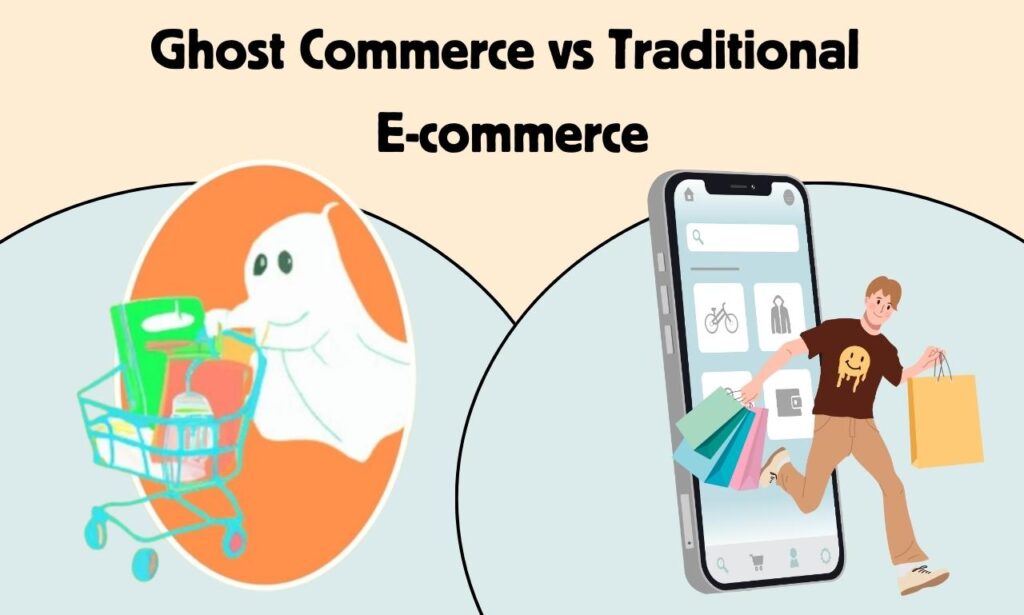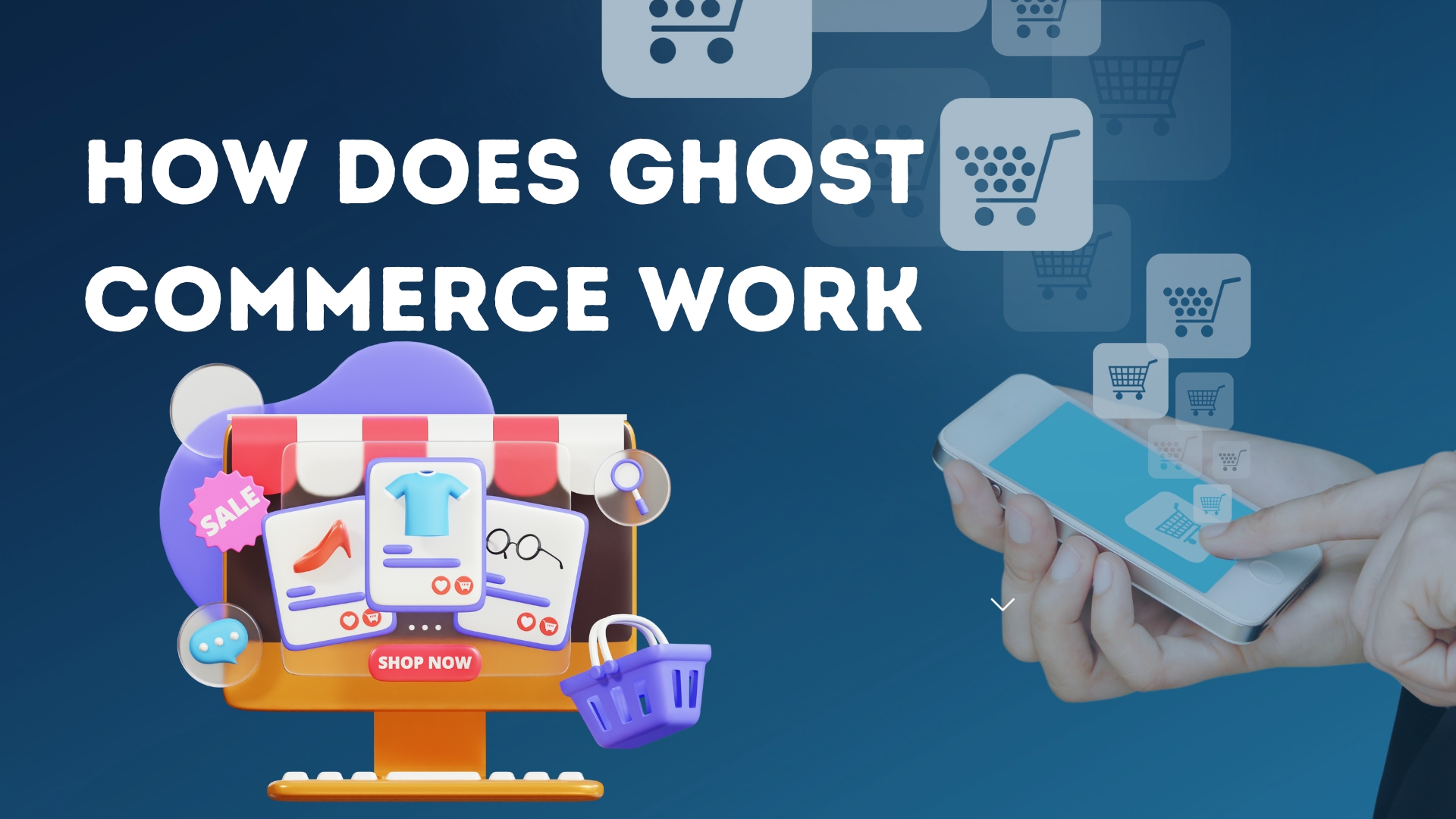In this article, we’ll explain ( How Does Ghost Commerce Work ) , giving you a clear understanding of this exciting concept. Ghost commerce is a modern and innovative way of doing e-commerce. It’s a strategy that helps businesses operate without the usual hassles of managing inventory and physical stores.
Table of Contents
How Does Ghost Commerce Work?
Ghost commerce, also known as headless commerce, is a new type of online business model that allows businesses to sell products and services without having to own or manage any inventory. Instead, ghost commerce businesses partner with other businesses, such as manufacturers and suppliers, to fulfill orders on their behalf.
Ghost commerce businesses typically have a strong online presence, but they may not have a physical storefront. They may sell their products and services through their own website, or through third-party marketplaces such as Amazon and eBay.
Here is a step-by-step overview of how ghost commerce works:
- A customer visits the ghost commerce business’s website or marketplace listing and selects a product or service to purchase.
- The customer places their order and pays for it using a traditional payment method such as a credit card or PayPal.
- The ghost commerce business receives the order and forwards it to the manufacturer or supplier.
- The manufacturer or supplier fulfills the order and ships the product or service directly to the customer.
- The customer receives the product or service and the ghost commerce business receives a commission on the sale.
Key Components of Ghost Commerce:
- Online Storefront: A professional and user-friendly website is the foundation of ghost commerce. It showcases products, accepts orders, and processes payments.
- Supplier Network: Establish partnerships with reliable suppliers who handle product storage, packaging, and shipping.
- Product Selection: Carefully choose products to sell, considering market demand and trends.
- Marketing Strategy: Effective marketing through SEO, social media, and content is crucial to drive traffic and sales.
- Customer Service: Maintain excellent customer support to build trust and handle inquiries.
The Role of Dropshipping:
Dropshipping is a vital component of ghost commerce. It allows businesses to list products on their website without purchasing inventory in advance. When a customer places an order, the product is shipped directly from the supplier to the customer’s doorstep, eliminating the need for warehousing and shipping logistics.
Ghost Commerce vs. Traditional E-commerce:

| Aspect | Ghost Commerce | Traditional E-commerce |
|---|---|---|
| Inventory Management | Minimal or none | Requires extensive storage |
| Upfront Costs | Lower | Higher |
| Risk | Lower | Higher |
| Scalability | Easier | Complex |
| Flexibility | High | Moderate |
| Overhead | Reduced | Significant |
Benefits of Ghost Commerce:
There are a number of benefits to ghost commerce for both businesses and consumers. For businesses, ghost commerce can help to reduce costs, improve efficiency, and expand reach. For consumers, ghost commerce offers a wider selection of products and services, competitive prices, and convenient delivery options.
Here are some of the key benefits of ghost commerce for businesses:
- Reduced costs: Ghost commerce businesses do not need to invest in inventory, warehouses, or retail stores. This can save them a significant amount of money on overhead costs.
- Improved efficiency: Ghost commerce businesses can automate many of the tasks involved in selling products and services, such as order fulfillment and customer support. This can free up their time to focus on other aspects of their business, such as marketing and product development.
- Expanded reach: Ghost commerce businesses can sell their products and services to customers all over the world. This is because they are not limited by the physical location of their business.
Here are some of the key benefits of ghost commerce for consumers:
- Wider selection: Ghost commerce businesses can offer a wider selection of products and services than traditional brick-and-mortar retailers. This is because they are not limited by the physical space of their store.
- Competitive prices: Ghost commerce businesses typically have lower costs than traditional brick-and-mortar retailers. This allows them to offer their products and services at competitive prices.
- Convenient delivery options: Ghost commerce businesses can ship products and services directly to customers’ homes or businesses. This is convenient for customers who do not have the time or energy to go to a physical store.
Examples of Ghost Commerce:
Here are a few examples of ghost commerce businesses:
- Dropshipping businesses: Dropshipping businesses are a type of ghost commerce business that sells products without having to carry any inventory. When a customer places an order, the dropshipping business simply forwards the order to the supplier, who then ships the product directly to the customer.
- Social commerce businesses: Social commerce businesses are a type of ghost commerce business that sells products and services through social media platforms such as Instagram, TikTok, and Facebook. Social commerce businesses typically use influencer marketing to promote their products and services.
- Direct-to-consumer (DTC) brands: DTC brands are a type of ghost commerce business that sells products directly to consumers without using any third-party retailers. DTC brands typically sell their products through their own website or through social media platforms.






